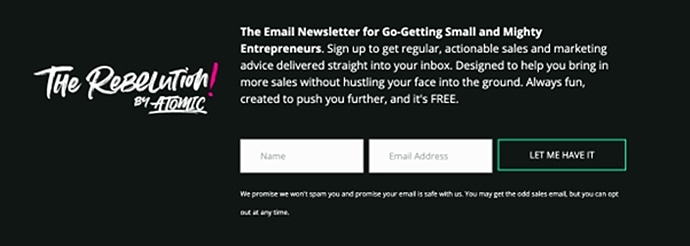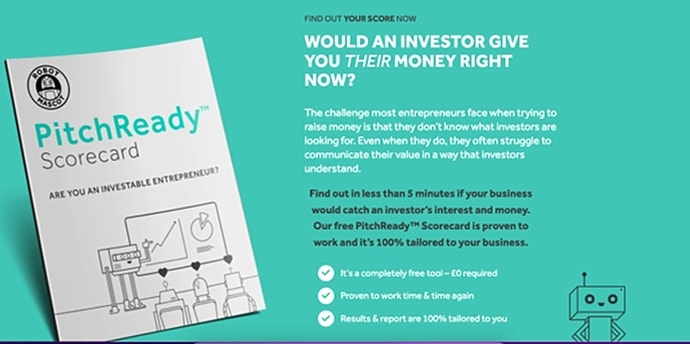In demand generation marketing, you must cater to and steer potential buyers along the awareness stages—the phases of a buyer's journey that lead them toward becoming aware of your services and products. And using use lead magnets is part of that process.
From a business and marketing point of view, lead magnets are clever, powerful little things. Or they can be... if you use them the right way... If you understand how to use them to get your audience to essentially self-segment.
And when they do, you can then create even more relevant, tailored lead magnets for those segments—and guide them as they advance in their buying journey... toward your products or services.
In this article, we'll explore what lead magnets are, how businesses use them incorrectly, and how to integrate segmentation and lead magnets to better drive demand generation.
What is customer segmentation?
Customer segmentation is the process of dividing potential and existing customers by specific criteria into segments so that you can personalize their experience.
You can segment prospects based on multiple factors, including...
- Age
- Gender
- Personality
- Income
- Interests
- Spending habits
You can also split people into smaller groups with similar characteristics relative to your marketing goals.
In short, segmentation allows you to target and communicate with your audience with a narrower focus and in a way that resonates with them.
There are several types of customer segmentation (such as a behavioral or lead type) and many reasons why it's important.
What is a lead magnet?
Lead magnets are free resources offered to your audience; they are an incentive, encouraging people to permit you to contact them.
Many people have a particular idea of lead magnets and don't realize they can take any form.
A lead magnet is any valuable asset that gets contacts into your database
But it does have to be valuable.
By providing something of value to prospective customers, you'll increase the likelihood that they hand over contact details in return (usually name and email address). Lead magnets act as incentives for leads, permitting you to contact them.
They also provide an opportunity for people to learn more about a business to see whether it might be a good fit for their needs.
What do people often get wrong about lead magnets?
Just because lead magnets can be anything doesn't mean all lead magnets are effective.
There's more to a good lead magnet than gathering contact details. What you then do with that information is also important. Also important: lead magnets should teach you about your audience's interests, allowing you to understand more about them and serve them better.
Many people create something that sounds interesting, such as a blogging checklist, but that doesn't necessarily tell you what kind of service people who downloaded it need, want, or would pay for.
Creating lead magnets with no clear direction or audience will only result in depersonalized, generic content, which then won't offer you valuable insights about those who are consuming that content.
You won't be able to create something your audience wants if you don't know what they're asking for in the first place—or, to put it differently, if you haven't tailored it for a segment you're targeting.
>> Related content: How to create strategic lead magnets
An example of poor segmentation with lead magnets
Let's look at an example of creating lead magnets that don't cater to segmentation.
Imagine being a social media manager and having Customer A and Customer B browsing your website.
- Customer A is a new business owner looking for hints and tips on running his social media. He downloads your "social media marketing checklist" covering critical elements of successfully running social media. It's a popular lead magnet but it doesn't convert because he isn't ready to spend money right now.
- Customer B, however, runs a more established business with the budget to hire a social media manager. But, she doesn't want a checklist; she wants someone to do it for her. You don't have a lead magnet targeted to this demographic, so she doesn't engage with your site.
Customer segmentation informs businesses on how they should be creating lead magnets targeted at different segments.
In other words, different kinds of lead magnets must be made specific to people at different stages of their buying journey.
Lead magnets: What you should be doing
Businesses must determine the awareness level of an audience for every lead magnet. Otherwise, you may offer something to someone who isn't ready... and that person simply won't consume it.
You should reverse-engineer your lead magnet to help your audience access something valuable. But also: to help you learn more about your audience.
It's more than just driving people to hand over their contact details. Lead magnets should offer their consumers something valuable and they should be just as beneficial to your business. They should link into your behavioral profiling and strategy and allow you to build a clear picture of your consumers.
As a business, think about what kind of information you need: How do you help consumers by solving their problems?
But also: how can you use lead magnets to learn more about prospects so that you can help them more appropriately?
It's pretty simple.
Use lead magnets to track where potential customers are in their buyer's journey.
Consider the awareness stages—what problem do they have?
From there, you can find the answer to the question: what solution would be most appropriate?
Knowing the answers to those questions will inform the lead magnet you need to create. And as a result of that, you're able to track where they are in their journey.
You should have at least one lead magnet for each awareness stage to see how people move through the process.
One lead magnet per awareness stage ultimately allows you to…
- Track how well your lead magnets are performing
- Work out what kind of content you need to put out at what time
- Know how to interact with prospects and nurture them.
Knowing all that is especially important in B2B marketing and selling, because purchasers can spend months in each awareness stage of their journey.
How do awareness stages influence lead magnets?
Awareness stages are essentially the steps of the buyer's journey, but in this case instead they're mapped to a prospect's awareness level regarding you and what you offer.
The stages are as follows:
Unaware > Problem-Aware > Solution-Aware > Product-Aware > Most Aware
- Unaware: The prospect doesn't know (or care about) you, and is dealing with symptoms of a problem.
- Problem-Aware: The prospect is aware of the core problem but isn't yet clear on solutions—i.e., how that problem might be resolved.
- Solution-Aware: The prospect knows that solutions exist, but not your product specifically.
- Product-Aware: The prospect is aware that you offer a product and is starting to narrow down options.
- Most Aware: The prospect is ready to buy and just needs to justify and validate the reasons to commit to purchasing.
Examples of excellent lead magnets
Now you know why powerful lead magnets are crucial and why segmenting your market is essential for their success.
But what does a good lead magnet look like?
There are many types of lead magnets. Remember, they can be anything that you use to collect data, including...
- Newsletters
- Buyer's guides
- Checklists
- Swipe files
- Templates
- Trial periods
- Samples
- Quizzes
- E-books
Here are a few examples.
Newsletters
A newsletter is one of the most common and straightforward lead magnets you can employ in your business.
And it doesn't have to be boring! We love this copy from small business community Atomic. The newsletter is a great way to introduce Atomic to people who have likely not heard of (or from) it before and are therefore not ready to sign up for membership yet. But the copy also sets the scene for what the newsletter will include, so subscribers know what to expect.

Atomic also is an excellent example of an organization that uses specific lead magnets throughout the awareness stages to target potential customers at all points in the buying process. It has numerous lead magnets, including a newsletter, courses, and challenges—all targeted toward different awareness levels.
Templates/Calendars
Templates are popular lead magnets and excellent for helping DIY customers become aware of your service. Templates can be a good way to get your foot in the door and show your expertise. Plus, they demonstrate that your prospective clients are ready to take action.
An example is Janet Murray, who offers a free social media content calendar:

Quizzes
We all love a quiz!
What kind of pizza dough are you?
Which one of Taylor Swift's cats are you most like? (It's Meredith Grey for me.)
But what if you could use these quiz answers to attract leads and recommend a product to your potential customers?
Quizzes let your audience to self-segment themselves. Depending on how in-depth it is, it's a shortcut to finding out quite a lot about their habits, needs, and desires.
This "pitch ready" quiz from Robot Mascot will help determine whether you are ready to pitch your business to investors. Robot Mascot helps companies convince investors to back their business, so this is a valuable lead magnet for both parties.

Need help with your lead magnets?
Understanding how to implement lead magnets into your marketing and demand generation strategies is essential not only for building up contact lists and interests but also for sustaining relationships so that they result in sales.
The data and insight that lead magnets can give your business are significant. Marketers need to actively anticipate and create marketing content that will drive data and bring the results you desire.
Need a little more help with lead magnets and segmentation?
Get in touch to see how MarketingProfs can help you create segmentation-focused lead magnets that power your demand generation.
More Resources on Customer Segmentation
Six Key Criteria for Market Segmentation [Infographic]
Five Segmentation Gaffes (And How to Avoid Them)
Segmentation Models Are Outdated: How to Update Your Marketing Segmentation Practices




